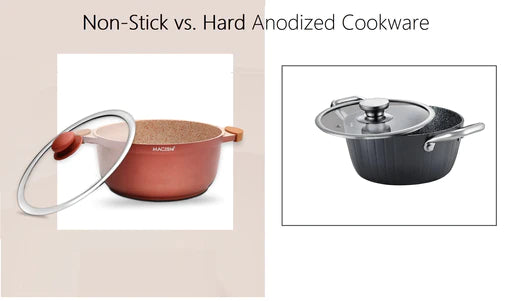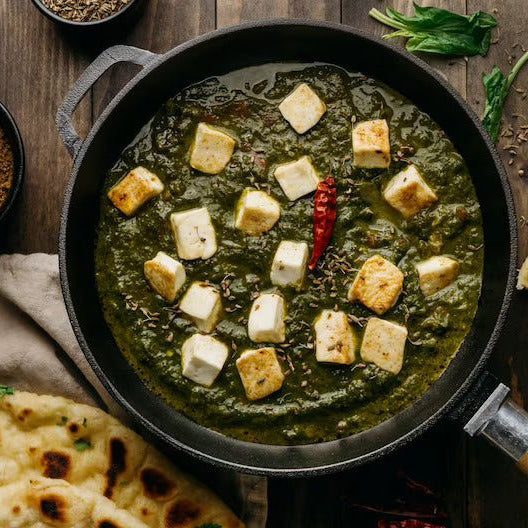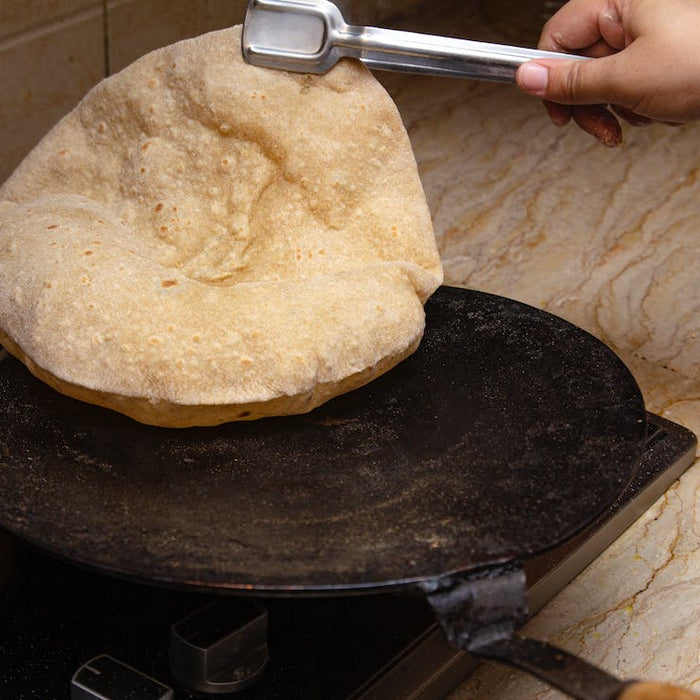
Non-stick Cookware vs. Hard Anodized Cookware: Making the Right Choice for Your Kitchen
Are you ready to elevate your cooking game with new cookware? If you're looking for the perfect pots and pans, you've likely encountered a choice between non-stick and hard anodized cookware. But what sets these two types of cookware apart? When should you choose one over the other? In this comprehensive guide, we answer all your burning questions about non-stick and hard anodized cookware.
What Are Non-Stick and Hard Anodized Cookware?
Non-Stick Cookware: Non-stick cookware is characterized by its smooth, non-porous surface that prevents food from sticking to the pan. This surface is typically coated with a layer of polytetrafluoroethylene (PTFE), more commonly known as Teflon. Non-stick pans are lauded for their effortless food release and easy cleanup.
Hard Anodized Cookware: On the other hand, hard anodized cookware is made from aluminum, which undergoes an electrochemical process called anodization. This process hardens the surface of the aluminum, making it non-porous and exceptionally durable. Hard anodized pans offer excellent heat distribution and retention.
When Should You Use Non-Stick Cookware?
Non-stick cookware is an excellent choice when you want easy, low-fat cooking with quick cleanup. Here's when to use non-stick pans:
1. Cooking Delicate Foods: Non-stick cookware is perfect for fragile foods like eggs and fish, where keeping the dish intact during cooking is crucial.
2. Reducing Oil Usage: With a non-stick surface, you can cook with less oil or butter, making your meals healthier.
3. Easy Cleanup: The non-stick coating ensures that food particles slide off the pan with ease, simplifying your post-cooking cleanup.
4. High-Temperature Cooking: Non-stick pans can handle high-temperature cooking, but avoid extreme heat to prolong their lifespan.
5. Baking: They are also suitable for baking dishes where easy removal is essential.
Where Does Hard Anodized Cookware Excel?
Hard anodized cookware is your go-to choice when you need durability and versatility. Here's where hard anodized pans shine:
1. Durability: Hard anodized cookware is incredibly tough, making it resistant to scratches and dents. It's built to last, even in the hands of the most enthusiastic home chefs.
2. Versatile Cooking: These pans offer even heat distribution and retention, making them suitable for slow cooking, braising, and making sauces.
3. High-Heat Cooking: Hard anodized cookware can withstand high-heat cooking without damage, making it ideal for searing and browning.
4. Metal Utensils: Unlike non-stick cookware, you can use metal utensils with hard anodized pots and pans without worrying about damaging the surface.
5. Oven-Safe: Many hard anodized pans are oven-safe, allowing you to start a dish on the stovetop and finish it in the oven.
Who Benefits from Non-Stick and Hard Anodized Cookware?
The choice between non-stick and hard anodized cookware depends on your cooking style and preferences. Here's who can benefit from each:
Non-Stick Cookware Is Ideal For:
-
Beginner Cooks: Non-stick pans are forgiving for those who are new to cooking. They're less likely to burn or stick food.
-
Healthy Cooks: If you prefer low-fat cooking, non-stick cookware requires minimal oil.
-
Quick Cleanup Enthusiasts: Those who dread washing dishes will appreciate the easy cleanup non-stick pans provide.
-
Egg Lovers: If you're an egg enthusiast, non-stick is a must for flawless omelets and sunny-side-up eggs.
Hard Anodized Cookware Is Perfect For:
-
Experienced Cooks: Seasoned chefs who enjoy precise control over their cooking processes benefit from the durability and versatility of hard anodized pans.
-
Multi-Purpose Cooks: If you want cookware that can handle various cooking techniques and styles, hard anodized is your best bet.
-
Searing and Browning: Those who love searing steaks or browning proteins will appreciate the high-heat capabilities of hard anodized cookware.
-
Long-Term Investment Seekers: Hard anodized cookware can be more expensive but is a sound investment due to its durability.
Why Is Your Choice of Cookware Important?
The cookware you choose significantly impacts your cooking experience. Here's why your decision is crucial:
-
Quality Dishes: The right cookware enhances the flavor and quality of your dishes. Non-stick pans are excellent for delicate dishes, while hard anodized pans offer superior heat distribution.
-
Healthier Cooking: The choice between non-stick and hard anodized cookware can affect the amount of fat or oil you use, directly influencing the healthiness of your meals.
-
Ease of Cooking: The ease of cooking and cleanup is determined by your cookware choice. Non-stick pans simplify the cooking process and make cleaning up a breeze.
-
Long-Term Value: Quality cookware is a long-term investment. Choosing the right type for your cooking style ensures you'll enjoy your pots and pans for years to come.
-
Versatility: Different dishes and cooking techniques may require specific cookware. Having both non-stick and hard anodized pans in your kitchen provides versatility.
Pros and Cons of Non-Stick Cookware
Non-stick cookware is great for easy food release and quick cleanup but might need more frequent replacement. Hard anodized cookware offers durability and versatility but comes at a higher cost. Consider your unique needs and culinary goals to make an informed decision about the cookware that's right for you.
Pros:
-
Easy Food Release: Non-stick cookware, as the name suggests, makes cooking a breeze. Food doesn't adhere to the surface, so you can easily flip, stir, and serve without worrying about sticking.
-
Healthier Cooking: You can cook with minimal oil or butter, making your meals healthier, and it's perfect for those who are health-conscious.
-
Quick Cleanup: Cleaning up non-stick pans is a cinch. Most of the time, a simple wipe with a sponge or cloth will do the job.
-
Versatility: Non-stick cookware is suitable for various dishes, especially delicate ones like eggs, fish, and pancakes.
-
Affordability: Non-stick cookware is often more budget-friendly than some other alternatives, making it accessible to a wide range of consumers.
Cons:
-
Durability: Non-stick coatings can wear out over time, reducing the cookware's lifespan. Scratches and metal utensils can hasten this process.
-
Limited High-Heat Use: Non-stick pans are not suitable for high-heat cooking methods like searing or broiling. High temperatures can damage the non-stick coating.
-
Replacement Costs: Due to the limited lifespan, you might need to replace non-stick cookware more frequently, potentially costing you more in the long run.
-
Not for Metal Utensils: Using metal utensils can damage the non-stick surface. It's best to use wooden or silicone utensils.
Pros and Cons of Hard Anodized Cookware
Pros:
-
Durability: Hard anodized cookware is incredibly tough and resistant to scratches and dents. It's built to last and can withstand the test of time.
-
Versatility: These pans offer even heat distribution and retention, making them suitable for a wide range of cooking techniques, from slow cooking to searing.
-
High-Heat Tolerance: Hard anodized cookware can handle high-heat cooking methods without warping or deteriorating, making it perfect for searing and browning.
-
Metal Utensils: You can use metal utensils with hard anodized pots and pans without worrying about damaging the surface.
-
Easy to Clean: The hard anodized surface is non-porous, making it resistant to staining, and it's typically easy to clean.
Cons:
-
Price: Hard anodized cookware is often more expensive than non-stick options, which might be a consideration for budget-conscious consumers.
-
Heavier: These pots and pans tend to be heavier due to the anodizing process and thicker construction, which can make them less convenient to handle.
-
Lack of Non-Stick Properties: While hard anodized surfaces are naturally stick-resistant, they don't offer the same level of non-stick properties as coated non-stick pans.
-
Maintenance: Although they're durable, hard anodized cookware does require some care to maintain their non-stick properties over time.
-
Heat Spreading: In some cases, the heat distribution may not be as even as other materials like stainless steel, which could affect your cooking results.
Which Is the Right Choice for Your Kitchen?
When deciding between non-stick and hard anodized cookware, consider your cooking style, preferences, and the types of dishes you commonly prepare. Having a mix of both types of cookware in your kitchen is also a great way to enjoy the best of both worlds. After all, having the right tools in your culinary arsenal can transform your cooking experience.
In conclusion, the choice between non-stick and hard anodized cookware should be based on your unique needs and culinary goals. Both options offer distinct advantages, so selecting the right cookware is all about aligning it with your personal cooking style. Whether you prefer the easy maintenance of non-stick cookware or the versatility and durability of hard anodized, your pots and pans should cater to your specific culinary needs.
So, which one are you choosing for your kitchen? It's time to equip yourself with the ideal cookware to take your cooking to the next level!
See below our Bestsellers of Non Stick Cookware 👇
Featured collection
-
Original price - Original priceOriginal price Rs. 19.99Rs. 19.99-Current price Rs. 19.99
Product title
Original price - Original priceOriginal price Rs. 19.99Rs. 19.99-Current price Rs. 19.99 -
Original price - Original priceOriginal price Rs. 19.99Rs. 19.99-Current price Rs. 19.99
Product title
Original price - Original priceOriginal price Rs. 19.99Rs. 19.99-Current price Rs. 19.99 -
Original price - Original priceOriginal price Rs. 19.99Rs. 19.99-Current price Rs. 19.99
Product title
Original price - Original priceOriginal price Rs. 19.99Rs. 19.99-Current price Rs. 19.99 -
Original price - Original priceOriginal price Rs. 19.99Rs. 19.99-Current price Rs. 19.99
Product title
Original price - Original priceOriginal price Rs. 19.99Rs. 19.99-Current price Rs. 19.99 -
Original price - Original priceOriginal price Rs. 19.99Rs. 19.99-Current price Rs. 19.99
Product title
Original price - Original priceOriginal price Rs. 19.99Rs. 19.99-Current price Rs. 19.99
Blog posts
-
-

What is Karahi or Kadahi? Exploring Its Best Use in 2024 | Non Stick
The kadai or karahi holds a special place, when it comes to Indian cooking,choose MACclite kadai cookware for a healthier and more enjoyable cooking experience.Read now -

Best Tawa for Roti 2024 - Guide to Choosing the Best Iron Tawa for Your Family
The roti tawa is the right tool to achieve the ideal texture and taste. Finding the perfect roti tawa for your family can be both rewarding and challenging in 2024 due to the many options available.Read now


